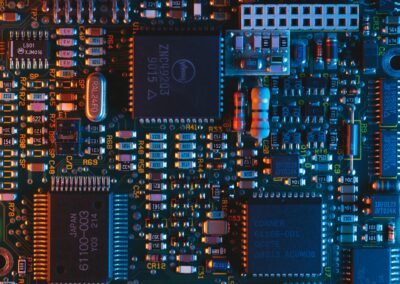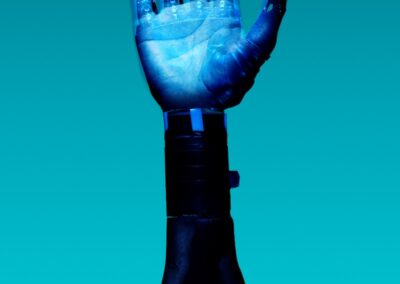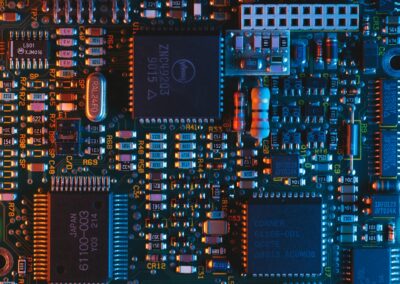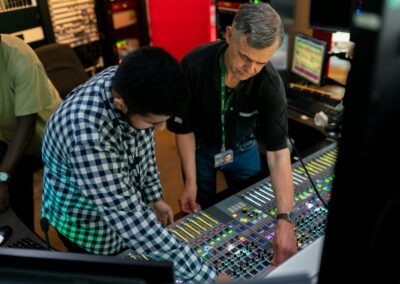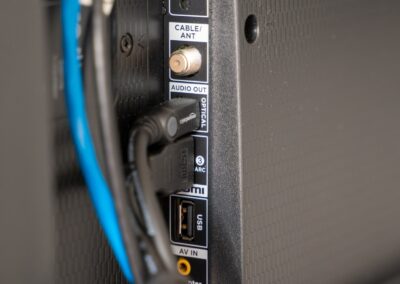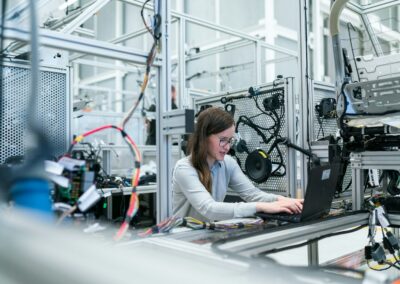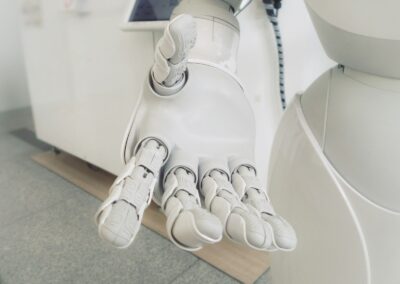Overcoming Obstacles in the Adoption of Digital Twin Technology
Understanding Digital Twin Technology in Construction
Integrating digital twins technology in construction is rapidly becoming a pivotal factor in modernizing the industry. Digital twins are virtual replicas of physical assets, processes, or systems that allow for real-time data analysis and monitoring. By creating a digital counterpart of a construction project, stakeholders can simulate various scenarios, predict outcomes, and make informed decisions, leading to improved efficiency and reduced risks.
In Saudi Arabia and the UAE, cities like Riyadh and Dubai are at the forefront of adopting cutting-edge technologies to enhance their infrastructure. Digital twins play a crucial role in these regions by enabling better project management, fostering collaboration among stakeholders, and ensuring timely completion of projects. However, integrating digital twin technology into existing construction practices poses several challenges that need to be addressed.
The first challenge lies in the initial implementation phase, where traditional construction processes must be adapted to incorporate digital technologies. This transition requires significant investment in hardware, software, and training. Additionally, there is often resistance to change within organizations, as stakeholders may be hesitant to adopt new methodologies. Overcoming this challenge involves a strategic approach, including comprehensive training programs and demonstrating the long-term benefits of digital twins.
Addressing Data Management and Interoperability
A critical challenge in integrating digital twin technology in construction is data management. Digital twins rely on vast amounts of data collected from various sources, including IoT devices, sensors, and existing information systems. Ensuring the accuracy, consistency, and security of this data is paramount for the effective functioning of digital twins. Poor data management can lead to incorrect simulations and analyses, ultimately compromising project outcomes.
To tackle this challenge, construction companies must implement robust data management frameworks. This involves adopting standardized data formats and protocols to facilitate seamless data exchange between different systems. Additionally, leveraging advanced data analytics and artificial intelligence can help in processing and interpreting the data, providing valuable insights for decision-making. Collaboration with technology providers and investing in secure data storage solutions are also crucial steps in addressing data management issues.
Interoperability is another significant challenge when integrating digital twin technology into construction practices. Construction projects often involve multiple stakeholders, each using different software and tools. Ensuring that these systems can communicate and share data effectively is essential for creating a cohesive digital twin environment. Adopting open standards and APIs can facilitate interoperability, allowing various systems to work together seamlessly. Additionally, fostering collaboration among stakeholders and encouraging the use of compatible technologies can further enhance interoperability.
Ensuring Cybersecurity and Data Privacy
As construction projects become increasingly digitized, cybersecurity and data privacy emerge as critical concerns. Digital twins, by their very nature, involve the collection and transmission of sensitive data, making them potential targets for cyberattacks. Ensuring the security of this data is essential to protect the integrity of construction projects and maintain stakeholder trust.
Implementing robust cybersecurity measures is paramount to safeguarding digital twin environments. This includes adopting advanced encryption techniques, regularly updating software and systems, and conducting thorough security audits. Additionally, establishing clear data privacy policies and ensuring compliance with relevant regulations can help protect sensitive information. Training employees on cybersecurity best practices and fostering a culture of security awareness within the organization are also vital steps in mitigating cyber risks.
In the context of Saudi Arabia and the UAE, where large-scale construction projects are prevalent, cybersecurity becomes even more critical. The governments of these regions have recognized the importance of digital security and have implemented stringent regulations to safeguard critical infrastructure. Construction companies must align their practices with these regulations and continuously monitor and improve their cybersecurity measures to stay ahead of potential threats.
Strategies for Successful Integration of Digital Twin Technology
Investing in Training and Skill Development
One of the most effective strategies for integrating digital twin technology in construction is investing in training and skill development. As digital twins require a new set of skills and expertise, construction companies must ensure that their workforce is adequately trained to handle these technologies. This involves providing comprehensive training programs that cover various aspects of digital twin technology, including data management, software usage, and cybersecurity.
Partnering with educational institutions and technology providers can also help in developing specialized training programs tailored to the construction industry. By equipping employees with the necessary skills and knowledge, construction companies can ensure a smooth transition to digital twin technology and maximize its benefits.
Furthermore, fostering a culture of continuous learning and innovation within the organization can drive the successful adoption of digital twin technology. Encouraging employees to stay updated with the latest advancements and providing opportunities for professional development can enhance their proficiency in using digital twins, ultimately leading to better project outcomes.
Leveraging Collaboration and Stakeholder Engagement
Successful integration of digital twin technology in construction requires effective collaboration and stakeholder engagement. Construction projects involve various stakeholders, including architects, engineers, contractors, and clients, each playing a crucial role in the project’s success. Ensuring that all stakeholders are aligned and actively involved in the digital twin integration process is essential.
Establishing clear communication channels and fostering a collaborative environment can facilitate better coordination among stakeholders. Regular meetings, workshops, and collaborative platforms can help in sharing information, addressing concerns, and making collective decisions. Additionally, involving stakeholders in the planning and implementation phases can create a sense of ownership and commitment towards the successful integration of digital twin technology.
In regions like Saudi Arabia and the UAE, where large-scale construction projects are common, leveraging collaboration and stakeholder engagement becomes even more critical. Governments and regulatory bodies can play a significant role in facilitating collaboration by providing guidelines and support for digital twin adoption. By fostering a collaborative ecosystem, construction companies can overcome integration challenges and achieve successful project outcomes.
Adopting a Phased Approach to Integration
Integrating digital twin technology into existing construction practices can be a complex and resource-intensive process. Adopting a phased approach to integration can help manage this complexity and ensure a smooth transition. This involves breaking down the integration process into manageable phases, each with specific goals and milestones.
The initial phase can focus on pilot projects to test and validate the effectiveness of digital twin technology. These pilot projects can serve as proof of concept, demonstrating the benefits of digital twins and addressing any potential issues before full-scale implementation. The subsequent phases can involve gradual expansion, incorporating digital twins into more projects and scaling up the technology’s usage.
During each phase, it is essential to monitor progress, gather feedback, and make necessary adjustments. Regular evaluation and optimization can help in identifying areas for improvement and ensuring that the integration process stays on track. By adopting a phased approach, construction companies can minimize disruptions, manage risks, and achieve successful integration of digital twin technology.
Conclusion: The Future of Construction with Digital Twins
Integrating digital twin technology in construction presents both challenges and opportunities. While the implementation process may involve obstacles such as data management, interoperability, and cybersecurity, the benefits of digital twins in enhancing project efficiency and sustainability are undeniable. By investing in training, fostering collaboration, and adopting a phased approach, construction companies can successfully integrate digital twin technology and pave the way for a smarter, more sustainable future.
In regions like Saudi Arabia and the UAE, where rapid urban development is ongoing, the adoption of digital twin technology is crucial for achieving long-term sustainability goals. Cities such as Riyadh and Dubai are leading the way in leveraging digital twins to create resilient and efficient infrastructure. As the construction industry continues to evolve, digital twins will play a pivotal role in shaping the future of construction, driving innovation, and ensuring sustainable growth.
—
#DigitalTwins #ConstructionIntegration #ModernTechnology #SmartConstruction #BusinessSuccess #ProjectManagement #LeadershipSkills #SaudiArabia #UAE #Riyadh #Dubai




